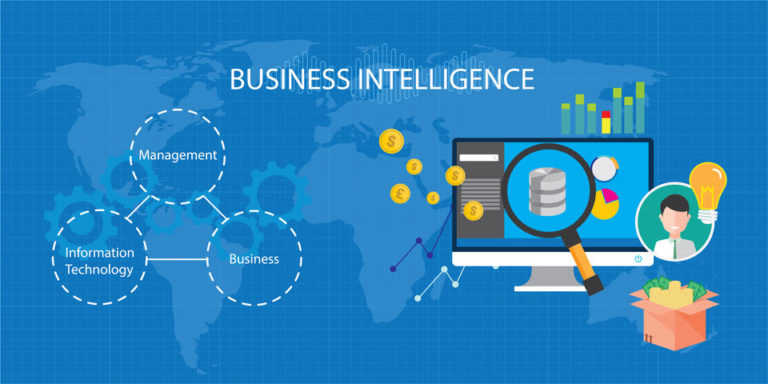Ai In Telecommunications: High Challenges And Alternatives
Artificial intelligence promises to handle a mess of pressing challenges in the telecommunications field whereas simultaneously unlocking vital value for both consumers and telecom operators. Telecommunications providers have lengthy accrued substantial volumes of telemetry and repair utilization data, a lot of which has remained largely untapped as a result of absence of appropriate software program. Nevertheless, main telcos have already embraced AI, and new digital entrants are reshaping the business by leveraging AI in the age of software-defined and cloud-based networks. To keep competitive, telcos must maintain pace with each evolving know-how and the pioneers driving its adoption.
In the quick term, community automation and intelligence will enable better root trigger analysis and prediction of points. Long time period, these applied sciences will underpin extra strategic targets, such as creating new customer experiences and dealing efficiently with rising enterprise needs. The telecommunications industry is increasingly relying on AI solutions and advanced analytics to handle advanced and costly networks. Communication service providers (CSPs) are increasingly utilizing AI to proactively address points, optimize network performance, and help the growth of emerging technologies corresponding to 5G. This not solely ensures seamless connectivity for purchasers but in addition helps scale back operating costs for telecom firms.
Predictive Upkeep For Better Service Delivery
Let’s say a buyer has been utilizing a primary cellphone plan with their Telecom provider for the past yr. Through analyzing the client’s utilization patterns and interactions with the provider’s website and mobile app, an AI-powered answer can advocate a personalized plan that better fits the consumer’s needs. For example, if the client has been utilizing extra knowledge than their current plan permits for, the system might suggest a plan with a better data limit. Welcome to 2024, a 12 months where the telecommunications business is buzzing with innovation, thanks to Artificial Intelligence (AI) and Generative AI (GenAI). It’s a world the place know-how isn’t just a device however a storyteller, reshaping how we interact with networks and connectivity. Let’s dive into the highest five trends which are making headlines and discover how they’re not just changing the game but in addition setting new rules.

This income enhance comes from not only retaining more customers but additionally attracting new ones who are seeking plans that traditional pricing fashions don’t offer. According to a study by IDC, telecom companies that have embraced AI for network upkeep are seeing a whopping 20% discount of their maintenance prices. That’s a big saving, proving that AI is not only a fancy add-on, however a stable funding in the efficiency and reliability of network operations. These AI techniques are also enabling higher useful resource allocation, energy savings (with some reports suggesting as much as a 15% discount in vitality costs), and improved network capability planning.
On a world basis, telcos are still in the means of launching 5G, making now the proper time for operators to set their sights on harnessing the power of synthetic intelligence. This will enable them to not solely ship value to the shopper but additionally develop progressive options and new revenue streams that leverage the big knowledge that is now being produced in terabytes. It routes calls to the most effective operators based on the nature of the query and buyer history. Technology enables telecommunications corporations to research buyer preferences and supply individualized providers. This includes tariff recommendations, content material choice, and predicting demand for companies.
Big gamers in the business are embracing even smarter automation methods, which suggests smoother day-to-day operations and happier clients. The role of AI is increasing past customer insights; AI is getting good at predicting what consumers will do next and helping businesses make smarter decisions. This guarantees to cut costs, make prospects happier, and keep them coming again for more.
Synthetic Intelligence In Telecommunication: Use Cases
While the worldwide market for AI in telecommunications is experiencing speedy growth, many businesses are still grappling with the complexities of implementing AI. Beyond the initial challenge of recognizing the need for AI and identifying suitable business use cases, the journey is beset with frequent obstacles. These encompass AI in Telecom a variety of challenges that CSPs must overcome to leverage AI effectively of their operations. Our expertise lies in integrating LLMs into production, whereas prioritizing information security and buyer training. Partner with us to drive innovation and automation for a successful future in your firm.
By embracing an adaptive technique, telecom corporations can reap these benefits and defend their business and prospects. It contains predictive menace modeling, where AI-driven risk intel and algorithms predict potential vulnerabilities and threats before they materialize. The world of content creation is witnessing a revolutionary shift with the arrival of Generative AI (GenAI).

The AI-driven summaries effectively capture users’ preferences, resulting in increased promotional uptake. This personalized interaction fosters client loyalty and satisfaction, making certain lasting engagement with Telecom providers. To gear up for an AI-driven telecom landscape, telecom corporations ought to give consideration to investing in data infrastructure, upskilling their workers, and fostering a tradition of innovation. Investing in information storage, analytics, and AI platforms can help telecom firms collect, analyze, and make use of knowledge successfully. While AI offers numerous advantages for the telecommunications business, there are challenges to beat in its adoption. Telecom companies want to deal with ability gaps, useful resource constraints, and information security issues when implementing AI solutions.
AI-powered chatbots and digital assistants present super benefits for customer support, similar to automating tasks, resolving simple points rapidly, and liberating up human representatives for more complex issues. AI has had a big impact on the telecommunications business, allowing businesses to gain a competitive edge, bettering customer support and community performance, enabling 5G networks, and enhancing network security. In 2021, the global AI within the telecom trade was value $1.2 billion and is anticipated to achieve $38.8 billion by 2031. AI-driven pricing models enable telecom corporations to answer these market dynamics effectively. Additionally, this method helps in decreasing churn rates, as clients are less more doubtless to change suppliers once they have plans tailored to their particular needs. Gone are the times when one-size-fits-all pricing models dominated the telecom industry.
Navigating The Complicated Panorama Of Information Privacy Regulations And Compliance: Tendencies And Predictions For 2024
Investing in the proper tech can be essential for the successful implementation of AI initiatives in telecom corporations. Addressing skill gaps and useful resource constraints permits telecom corporations to faucet into the potential of AI, enhancing their operations and sustaining market competitiveness. Robotic Process Automation (RPA) in telecoms includes the use of AI technologies, such as Natural Language Processing (NLP) and rule engines, to automate rule-based processes. RPA may help telecom companies automate their back-office processes, like billing and order achievement, releasing up their staff to give consideration to more priceless tasks. Proactive community administration and self-optimizing networks stand as two vital functions of AI in network optimization and community automation efficiency. Incorporating network planning into these processes might be elaborated on in the subsequent sections.

Robotic Process Automation (RPA) is a form of business course of automation expertise primarily based on AI. RPA can convey greater effectivity to telecom capabilities by allowing telcos to extra easily manage their back-office operations and large volumes of repetitive and rules-based actions. RPA frees up CSP staff for greater value-add work by streamlining the execution of advanced, labor-intensive, and time-consuming processes, such as billing, data entry, workforce administration, and order achievement. According to Statista, the RPA market is forecast to develop to 13 billion USD by 2030, with RPA attaining nearly common adoption within the subsequent 5 years. Telecom, media, and tech corporations expect cognitive computing to “substantially transform” their companies inside the next few years. Intellias collaborated with a serious nationwide telecommunications company, helping them transition to AWS for enhanced information processing and business intelligence.
In different words, this work, rooted in the field of linguistics, seeks to allow computer systems to know the meaning behind human tone and word choice, in order to more shortly assist with the intended end result. Follow these best practices for data lake management to ensure your group can make the most of your investment. Telecommunications firms can ensure knowledge privacy when using AI by implementing robust information encryption. In addition to anonymization strategies, strict entry controls, privacy rules and clear data usage insurance policies.
Examples contain anomaly detection, performance optimization, and bother ticket action recommendations. Artificial intelligence supports real-time concern detection, root trigger analysis, and correlation of knowledge, aiding in filtering false alerts. It assists with 5G and NFV transition, addressing complexities in network design. Telecom corporations want to stay up to date with the evolving AI applied sciences and purposes and be ready to undertake and make the most of them to their advantage. By embracing emerging AI applied sciences, telecom corporations can keep ahead of the curve and ensure their continued growth and success.
- In the realm of AI and telecommunications is guiding an era of remarkable change.
- The addition of machine studying allows such systems to be even faster and extra accurate.
- Comcast NBCUniversal LIFT Labs efficiently concluded its Generative AI Accelerator.
Additionally, Ask AT&T is adaptable and designed to work with numerous Large Language Models. Its capabilities lengthen to analyzing huge knowledge flows and providing insights via pure language queries. The upcoming sections will explore emerging AI technologies and applications, together https://www.globalcloudteam.com/ with methods for telecom corporations to prepare for an AI-driven landscape. The subsequent sections will explore how telecom firms can deal with these challenges and successfully incorporate AI applied sciences and applications.
Sentiment Analysis For Customized Service
Chatbots and virtual assistants, by way of automation of customer support tasks, can expedite the resolution of simple issues, thus allowing human representatives to concentrate on extra advanced issues. For instance, large language fashions like GPT-3 and its ChatGPT prompt-based interface could make buyer inquiries much easier to handle and supply fast access to buyer information. By analyzing network site visitors patterns, AI algorithms can establish anomalies and potential security threats, corresponding to unauthorized entry or suspicious actions. AI-powered techniques can detect and mitigate fraud in actual time, safeguarding the telecom community and protecting customer data. The telecom industry is at the forefront of technological innovation, and artificial intelligence (AI) is playing a serious function in this transformation. AI is being used to improve community performance, automate customer service duties, and develop new products and services.
Embracing sentiment analysis may find yourself in better buyer engagement, greater buyer satisfaction, and a more loyal customer base. Identifying buyer emotions and preferences allows telecom firms to customize their companies and advertising strategies to go nicely with customer needs. This not only enhances the client expertise but in addition contributes to the company’s development and success in the aggressive telecommunications market.
Telecommunication companies are showing a rising interest in Generative AI tools. Emerging AI technologies and functions, similar to generative AI, have the potential to remodel the trade by enabling personalised experiences, autonomous networks, and streamlined operations. Telecom firms that embrace AI and spend money on the necessary infrastructure, coaching, and innovation will be better positioned to thrive in an AI-driven telecom landscape. Predictive maintenance utilizing AI can help telecom firms proactively address tools failures, resulting in higher service delivery and customer satisfaction. AI-driven predictive analytics can monitor the state of apparatus and anticipate failure primarily based on patterns, permitting telecom corporations to plan upkeep earlier than issues happen. Despite all of these pressing reasons to adopt synthetic intelligence in your telecommunications enterprise, there are a variety of challenges that must be thought of.
